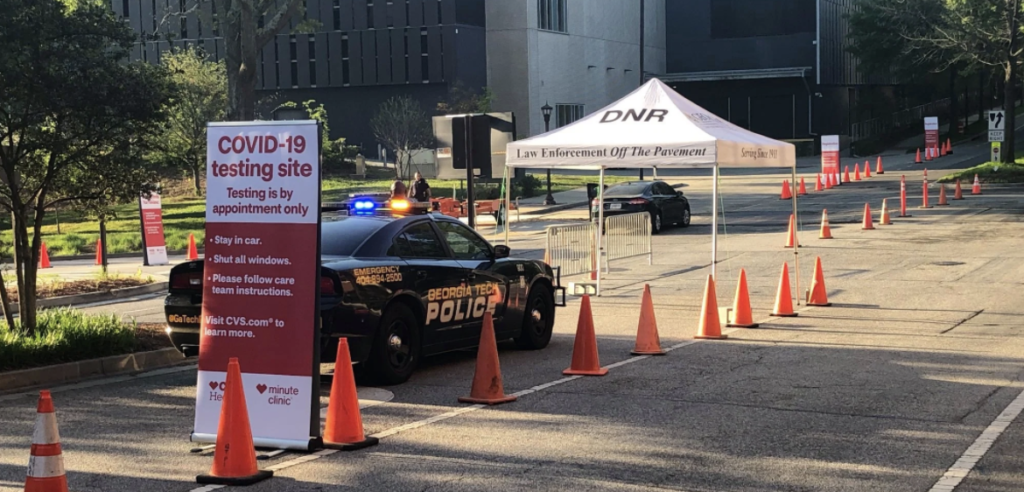
Our Take: 4.5/5 Stars
Over the past two weeks, Twitter has seemingly been overrun with screenshots of cute animal animated characters living on a deserted island. From the outside, “Animal Crossing” may not seem like much. For people who have not played any installments in the game title, it probably looks like all there is to do is fish, catch bugs and be enslaved to a capitalistic raccoon. While those are some of the main features of the game, “Animal Crossing: New Horizons” offers much more to those who have picked up the title to pass the time during quarantine.
“Animal Crossing” is not exactly a traditional “gamer’s” game. There is no big final boss you have to defeat. There are no violent cut scenes featuring the villagers kicking each other off ledges. Instead, players take the game day-by-day with the deserted island they are plopped onto. Upon starting “Animal Crossing: New Horizons,” it is up to users to create and customize the game into their own virtual getaway.
After picking an island layout and meeting the first two animal villagers that will embark on the journey with users, players get to scrounge around for natural resources to craft into furniture and essential tools. The crafting aspect of the game is new to the series, and while it comes with opportunities to customize item colors and allows the players some autonomy to obtain items beyond what is offered in the shop, there is one major drawback. The crafted tools frequently break, and do so at some of the most annoying times, including when players have spent their hard-earned “Nook Miles” to travel to another island to do some resource mining.
One major improvement to New Horizons is the new inventory system. For older fans of the game, seeing the dreaded “my pockets are full already!” message right in the middle of fishing or digging up fossils was always an annoying and unwelcome sight. Now, players have the ability to expand their inventory capacity by purchasing the “Ultimate Pocket Organizing Guide” with Nook Miles. On top of this, the game now automatically stacks different items, such as fruits, weeds, tree branches and other important crafting supplies.
In older titles, players had to manually shift their inventory around to stack and maximize space while playing the game, but it is now organized for them. Because of this, players can spend more time freely playing the game without having to constantly check their pocket space. While these new features of the game may go unnoticed by new players to the series, they show a slight improvement in the player experience in comparison to the previous games.
For novice players just picking up “Animal Crossing” for the first time, “New Horizons” serves as an incredibly satisfying gaming experience for multiple reasons. With daily mini-goals, such as catching five bugs, talking to three neighbors or stopping by the “Nook Stop” incentivizing players to log on every day, the game can quickly become incredibly attention-grabbing. Add on a daily rotating furniture and clothing shop collection and the vast freedom to customize the island, the game consistently leaves players coming back for more.
For those wishing they could go outside and be closer than six feet to their friends and significant others, the game offers a very stripped multiplayer experience. By inviting others to their island, players can enjoy a nice stroll through the beautifully designed museum exhibits that will make players feel like they are at Fernbank with their boo-thang again.
However, a setback in the game that will hopefully be fixed as updates are released, is the lack of any real multiplayer functions within the game. Besides mailing each other letters and fishing next to each other, players who choose to utilize the island visiting function do not really have much to do. Some players have gotten creative and made their own “olympic games” through the terraforming feature that allows players to create land areas from scratch, but other than that players are left to figure out how to entertain their guests themselves.
Perhaps the feature of the game that reels in the most players to spend hours playing is the relationships formed with their fellow islanders. The animals within the game are some of the most loved video game characters of any Nintendo game series. Despite many viral social media posts depicting players bullying their “ugly” villagers to force them to move off the island, most players love and cherish their daily conversations and interactions with their villagers. Animal neighbors will always be there to cheer players up by giving them items and engaging in riveting conversations about whatever they have chosen to obsess over, be it working out or becoming a famous celebrity. Their personalities give life to the game and make the player feel like their daily presence really matters.
“Animal Crossing: New Horizons” is the perfect game for anybody wanting an escape from the real world. The game has no overall objective, so there is no wrong way to play it. This is for game lovers that want to spend their days harvesting fruit trees, fishing and catching tarantulas to pay off their debts and flex their creative skills to renovate their island getaway. If players want to just talk to their villagers and spend the rest of the day listening to the waves of the ocean crash at their feet, they can do that too. With the game having no real ending, the possibilities are endless.









